Source: healthitanalytics.com January 28, 2020 – New research from UT Southwestern has shown that deep learning technology could help providers quickly develop optimal treatment plans for cancer patients, decreasing the odds that the disease will spread. Patients usually have to wait several days to a week to begin therapy while doctors manually develop treatment plans, which can be a Read More
Category: Deep Learning
Deep Learning

Source: zmescience.com If you want a machine to learn to do something intelligent you either have to program it or teach it to learn. For decades, engineers have been programming machines to perform all sorts of tasks — from software that runs on your personal computer and smartphone to guidance control for space missions. But Read More

Source: arabiangazette.com 5th edition of IoT Middle East 2020 conference will be held at Armani Dubai and will cover a range of topics including how to generate business out of Internet of Things (IoT), Artificial Intelligence (AI), Machine Learning (ML) and Intelligent automation as the adoption of IoT is expected to accelerate over the coming Read More

Source: pubs.rsna.org Deep learning with convolutional neural networks (CNNs) has shown tremendous success in classifying images, as we have seen with the ImageNet competition (1), which consists of millions of everyday color images, such as animals, vehicles, and natural objects. For example, recent artificial intelligence (AI) systems have achieved a top-five accuracy (correct answer within Read More
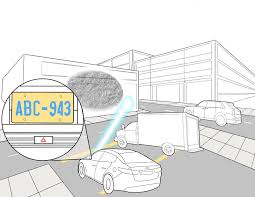
Source: photonics.com A team of U.S. researchers has created a laser-based system able to image around corners in real time. With further development, the system may allow self-driving cars to look around parked cars or busy intersections to see hazards or pedestrians. The technology could also be installed on satellites and spacecraft for tasks such Read More

Source: novuslight.com Euresys announced the availability of a new Deep Learning library: EasySegment works in unsupervised mode. After being trained with “good” images only, it can detect and segment anomalies and defects in new images. EasySegment works with any image resolution, supports data augmentation and masks, and is compatible with CPU and GPU processing. The new Read More
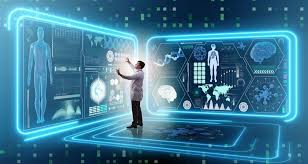
Source: In recent years, cutting-edge computational technologies are increasingly being applied in clinical settings in order to provide higher quality of healthcare. Furthermore, huge amount of biomedical data is continuously acquired and stored from ever accurate medical devices. Conversely, in the scientific research community, there is a growing necessity to develop more optimized methodologies that Read More
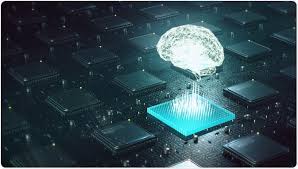
Source: news-medical.net Several technologies have been developed over the past few years that are pushing the boundaries of our scientific knowledge to new heights. As these technologies develop scientists are looking into ways of using them in tandem, to produce more accurate results and new ways of approaching the problems of the modern scientific industry. Read More
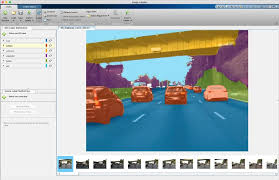
Source: /i-hls.com Currently, almost every company integrates Artificial Intelligence into its products, including deep learning. “The availability of current computing power, alongside labeled databases and trained networks that can be easily adapted for solving new problems – these are the factors that helped the deep learning field to finally grow”, said Roy Fahn, who leads the Read More
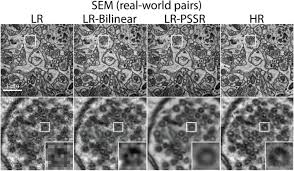
Source: photonics.com AUSTIN, Texas, and SAN DIEGO, Jan. 14, 2020 — Using deep learning techniques, researchers from the Salk Institute have developed a new microscopy approach that could make microscopic techniques used for brain imaging 16 times faster. The researchers trained their deep learning system using data from the Texas Advanced Computing Center (TACC) at The University Read More
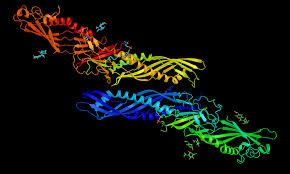
Source: drugtargetreview.com Researchers have designed a novel approach to use deep learning to improve their understanding of how proteins interact in the body. According to the team, their findings could result in more accurate structure models of protein interactions in various diseases and better drug designs that target protein interactions. The study, conducted at Purdue Read More
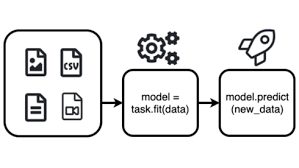
Source: sdtimes.com Amazon has launched a new open-source library that will make it easier for developers to deploy machine learning models. With AutoGluon, Amazon aims to help developers deploy their models using just a few lines of code. “We developed AutoGluon to truly democratize machine learning, and make the power of deep learning available to all developers,” Read More

Source: infoworld.com Amazon has created an open source toolkit for automated machine learning, called AutoGluon, designed to make it easier for software developers to take advantage of deep learning models in their applications. AutoGluon is intended for both machine learning experts and beginners, the company says. Officially launched January 9, AutoGluon lets developers harness machine learning models with image, Read More
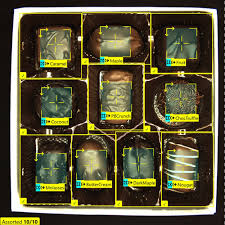
Source: healthcarepackaging.com Despite the advance of automation technologies into virtually every realm of manufacturing, quality inspection remains a task commonly reserved for humans. One of the primary reasons for this is that factors such as random product placement, atypical defects, and variations in lighting can be problematic for traditional machine vision systems. This difficulty is Read More

Source: telecompaper.com Singapore operator M1 and Singapore Institute of Technology (SIT) have signed a research collaboration agreement, to jointly research and develop artificial intelligence (AI) deep learning algorithms and methodology to upgrade the planning, operations and maintenance of large and complex mobile networks. M1 and SIT plan to jointly develop AI services to reduce manual Read More

Source: hrtechnologist.com “Deep-learning will transform every single industry,” said Andrew Ng, a Chinese-American scientist excelling in machine learning and AI. McKinsey’s forecast on machine learning backs up his statement claiming that by 2030, AI will have a significant impact of $13 trillion on the global economy. The Human Resource department will also witness the influence Read More

Source: expresscomputer.in The human brain is complicated and for all the right reasons. A pathway of neurons, millions of cells, creating a response to stimuli and observation, all of this working simultaneously to help our brain give an appropriate response. Furthering its greatness, the brain is constantly observing and learning. A well-known learning method- ‘learning by Read More
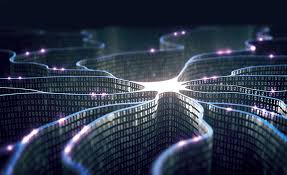
Source: thenextweb.com No other technology was more important over the past decade than artificial intelligence. Stanford’s Andrew Ng called it the new electricity, and both Microsoft and Google changed their business strategies to become “AI-first” companies. In the next decade, all technology will be considered “AI technology.” And we can thank deep learning for that. Read More

Source: phys.org During the past years, artificial intelligence (AI)—the capability of a machine to mimic human behavior—has become a key player in high-tech areas like drug development projects. AI tools help scientists to uncover the secret behind the big biological data using optimized computational algorithms. AI methods such as deep neural network improves decision making Read More

Source: mashable.com Artificial intelligence and deep learning might bring to mind pictures of Will Smith’s misadventures in I, Robot, but in reality, these are the technologies behind tomorrow’s world. In fact, by 2030, PwC predicts nearly 40 percent of all U.S. jobs could be replaced by AI and automation. That’s a bit frightening, but if you’re one of Read More
Source: techxplore.com Recent advances in machine learning have enabled the development of techniques to detect and recognize human emotions. Some of these techniques work by analyzing electroencephalography (EEG) signals, which are essentially recordings of the electrical activity of the brain collected from a person’s scalp. Most EEG-based emotion classification methods introduced over the past decade Read More
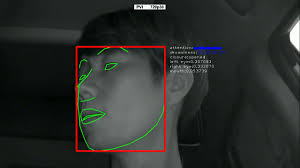
Source: therobotreport.com StradVision Inc. last week said it had raised $27 million in Series B funding. The Seoul, South Korea-based company makes vision processing technology for autonomous vehicles and advanced driver assistance systems, or ADAS. Posco Capital led the round, which included investment from IDG Capital, Industrial Bank of Korea, Lighthouse Combined Investment, LSS Private Equity, Read More
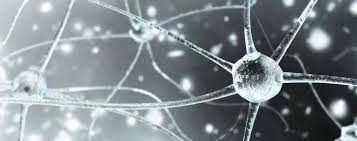
Source: information-age.com A recent study by Peltarion has revealed that just 1% of decision makers have extensively deployed deep learning, despite high hopes 99% of participants in ‘The Peltarion AI Decision Makers Survey: Are enterprises ready to go deep with AI?’ expressed belief that deep learning would transform their industry, and 98% said that their company were Read More
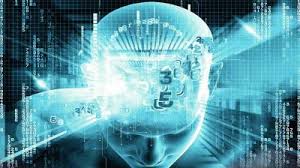
Source: deccanchronicle.com Hyderabad: As scientific disciplines go, the field of ‘Deep Learning’ is but an infant. However, it will soon have a disruptive effect on the field of drug design, experts say. They were speaking at a panel discussion as part of the ongoing international conference on high performance computing in Hyderabad on Wednesday. Deep learning, Read More

Source: techxplore.com Taking good-quality photographs can be a challenging task, as it typically requires finding ideal locations, angles and lighting conditions. Although artistic pictures have so far primarily been taken by human photographers, in recent years, some researchers have started investigating the possibility of taking pictures automatically using robots. To this end, a team of Read More

Source: idgconnect.com Deep learning is overtaking more classic machine learning methods according to a recent study of AI industry leaders across Europe, which included Amazon, Google and JP Morgan. The report, entitled Deep Learning: Opportunities and Best Practice, published by CognitionX and Peltarion, highlighted several factors that are enabling wider uptake, such as increased data Read More

Source: technologynetworks.com Deep learning, a type of artificial intelligence, can boost the power of MRI in predicting attention deficit hyperactivity disorder (ADHD), according to a study published in Radiology: Artificial Intelligence. Researchers said the approach could also have applications for other neurological conditions. The human brain is a complex set of networks. Advances in functional Read More
Source: techxplore.com Carnegie Mellon University computer scientists have taken a deep learning method that has revolutionized face recognition and other image-based applications in recent years and redirected its power to explore the relationship between genes. The trick, they say, is to transform massive amounts of gene expression data into something more image-like. Convolutional neural networks Read More
Source: forbes.com This year, we have seen all the hype around AI Deep Learning. With recent innovations, deep learning demonstrated its usefulness in performing tasks such as image recognition, voice recognition, price forecasting, across many industries. It’s easy to overestimate deep learning’s capabilities and pretend it’s the magic bullet that will allow AI to obtain General Intelligence. In truth, we are Read More

Source: investors-corner.bnpparibas-am.com Deep learning and asset pricing models Following our first post, we now discuss the “Deep Learning in Asset Pricing” paper of Guanhao Feng from City University of Hong Kong. This proposes a departure from machine learning research that attempts to forecast directly financial asset returns and stumbles on the problem of a low signal-to-noise ratio in such returns. Instead, and to Read More
